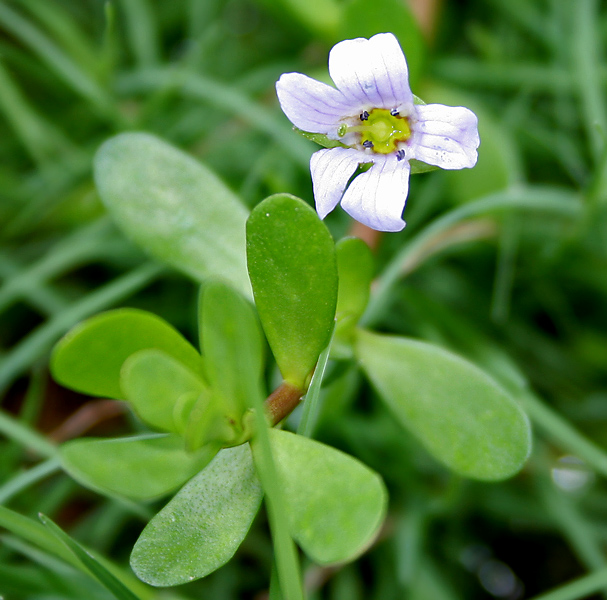|
Veroniceae
Veroniceae is a plant tribe in the family Plantaginaceae. It contains about 10 genera, including '' Veronica'' (speedwells) and '' Veronicastrum'' (Culver's roots). Description Etymology Taxonomy Veroniceae contains the following genera: * '' Kashmiria'' (1 species) ― Western Himalayas, * '' Lagotis'' (30 species) ― Eastern Europe to Temperate Asia, Subarctic America, * '' Neopicrorhiza'' (2 species) ― Himalayas to South-Central China, * '' Paederota'' (2 species) ― Eastern Alps of Austria, Italy, and Slovenia, * ''Picrorhiza'' (2 species) ― Pakistan to Western Himalayas, * '' Scrofella'' (1 species) ― Western and Central China, * '' Veronica'' (462 species) ― Worldwide, * '' Veronicastrum'' (19 species) ― Eastern Asia and Eastern North America, * '' Wulfenia'' (4 species) ― Albania, Austria, Italy, Lebanon-Syria, Turkey, Yugoslavia, * '' Wulfeniopsis'' (2 species) ― Nepal, West Himalaya, Pakistan and Afghanistan. [...More Info...] [...Related Items...] OR: [Wikipedia] [Google] [Baidu] |
Plantaginaceae
Plantaginaceae, the plantain family or veronica family, is a large, diverse family (biology), family of flowering plants in the order Lamiales that includes common flowers such as Antirrhinum, snapdragon and Digitalis, foxglove. It is unrelated to the true plantains, banana-like fruit also called "plantain". In older classifications, Plantaginaceae was the only family of the order Plantaginales, but numerous phylogenetic studies, summarized by the Angiosperm Phylogeny Group, have demonstrated that this taxon should be included within Lamiales. Overview The plantain family as traditionally circumscribed consisted of only three genera: ''Bougueria'', ''Littorella'', and ''Plantago''. However phylogenetic research has indicated that Plantaginaceae ''sensu stricto'' (in the strict sense) were nested within Scrophulariaceae (but forming a group that did not include the type genus of that family, ''Scrophularia''). Although Veronicaceae (1782) is the oldest family name for this group, ... [...More Info...] [...Related Items...] OR: [Wikipedia] [Google] [Baidu] |
Wulfenia
''Wulfenia'' is a plant genus in the family Plantaginaceae. The genus was named after Franz Xaver von Wulfen (1728–1805), an Austrian botanist, zoologist, mineralogist, alpinist, and Jesuit priest. It was first described in 1781 by Nikolaus Joseph von Jacquin in . It is also in Tribe Veroniceae. Its native range is from Central Europe (Italy, Albania, Austria and Balkans) to southern Turkey and northern Lebanon and Syria in western Asia. Species Accepted by Plants of the World Online; * '' Wulfenia baldaccii'' * ''Wulfenia carinthiaca'' * '' Wulfenia glanduligera'' * '' Wulfenia orientalis'' The genus is recognized by the United States Department of Agriculture and the Agricultural Research Service The Agricultural Research Service (ARS) is the principal in-house research agency of the United States Department of Agriculture (USDA). ARS is one of four agencies in USDA's Research, Education and Economics mission area. ARS is charged with ext ..., but they only list the ... [...More Info...] [...Related Items...] OR: [Wikipedia] [Google] [Baidu] |
Wulfeniopsis
''Wulfeniopsis'' is a genus of flowering plants belonging to the family Plantaginaceae. It is also in tribe Veroniceae. It is native to Nepal, West Himalaya, Pakistan and Afghanistan. Known species: * '' Wulfeniopsis amherstiana'' (Benth.) D.Y.Hong * '' Wulfeniopsis nepalensis'' (T.Yamaz.) D.Y.Hong The genus name of ''Wulfeniopsis'' is in honour of Franz Xaver von Wulfen (1728–1805), an Austrian botanist, zoologist, mineralogist, alpinist, and Jesuit priest The Society of Jesus (; abbreviation: S.J. or SJ), also known as the Jesuit Order or the Jesuits ( ; ), is a religious order (Catholic), religious order of clerics regular of pontifical right for men in the Catholic Church headquartered in Rom .... It was first described and published in Acta Phytotax. Sin. Vol.18 on page 51 in 1980. References {{Taxonbar, from=Q9096322 Plantaginaceae Plantaginaceae genera Plants described in 1980 Flora of Afghanistan Flora of the Indian subcontinent ... [...More Info...] [...Related Items...] OR: [Wikipedia] [Google] [Baidu] |
Tribe
The term tribe is used in many different contexts to refer to a category of human social group. The predominant worldwide use of the term in English is in the discipline of anthropology. The definition is contested, in part due to conflicting theoretical understandings of social and kinship structures, and also reflecting the problematic application of this concept to extremely diverse human societies. Its concept is often contrasted by anthropologists with other social and kinship groups, being hierarchically larger than a lineage or clan, but smaller than a chiefdom, ethnicity, nation or state. These terms are similarly disputed. In some cases tribes have legal recognition and some degree of political autonomy from national or federal government, but this legalistic usage of the term may conflict with anthropological definitions. In the United States (US), Native American tribes are legally considered to have "domestic dependent nation" status within the territorial ... [...More Info...] [...Related Items...] OR: [Wikipedia] [Google] [Baidu] |
Veronica (plant)
''Veronica'' is the largest genus in the flowering plant family Plantaginaceae, with about 500 species. It was formerly classified in the family Scrophulariaceae. Common names include speedwell, bird's eye, and gypsyweed. Taxonomy for this genus was changed in the early 21st century, with the genus ''Hebe'' and the related Australasian genera '' Derwentia'', ''Detzneria'', ''Chionohebe'', ''Heliohebe'', ''Leonohebe'' and ''Parahebe'' now included. Monophyly of the genus is supported by nuclear ribosomal internal transcribed spacer (ITS) and cpDNA. The taxa of the genus are herbaceous annuals or perennials, and also subshrubs, shrubs or small trees when ''Hebe'' is included. Most of the species are from the temperate Northern Hemisphere, though with some species from the Southern Hemisphere; ''Veronica'' sect. ''Hebe'' is mostly from New Zealand. Taxonomy The genus name ''Veronica'' used in binomial nomenclature was chosen by Carl Linnaeus based on preexisting common ... [...More Info...] [...Related Items...] OR: [Wikipedia] [Google] [Baidu] |
Veronicastrum
''Veronicastrum'' is a genus of flowering plants in the family Plantaginaceae. In some taxonomy systems, ''Veronicastrum'' species have been placed within the genus '' Veronica''. The most commonly cultivated species is '' Veronicastrum virginicum'', which is native to the Eastern parts of North America. ''Veronicastrum'' has previously been part of the family Scrophulariaceae The Scrophulariaceae are a family of flowering plants, commonly known as the figwort family. The plants are annual and perennial herbs, as well as shrubs. Flowers have bilateral (zygomorphic) or rarely radial (actinomorphic) symmetry. The Scr .... However, following recent genetic studies, several genera were transferred to other families including ''Veronicastrum'', transferred to Plantaginaceae. Species of genus ''Veronicastrum'' * '' Veronicastrum borissovae'' * '' Veronicastrum cerasifolium'' * '' Veronicastrum sachalinense'' * '' Veronicastrum sibiricum'', Sibirian veronicastrum * '' Veronic ... [...More Info...] [...Related Items...] OR: [Wikipedia] [Google] [Baidu] |
Kashmiria
''Kashmiria himalaica'' is a species of flowering plant belonging to the family Plantaginaceae. It is the sole species in genus ''Kashmiria''. It is native to the Western Himalaya The Himalayas, or Himalaya ( ), is a mountain range in Asia, separating the plains of the Indian subcontinent from the Tibetan Plateau. The range has some of the Earth's highest peaks, including the highest, Mount Everest. More than 100 pea .... References {{Taxonbar, from=Q10313945, from2=Q15336525 Plantaginaceae Monotypic Plantaginaceae genera Flora of West Himalaya Plants described in 1883 Taxa named by Joseph Dalton Hooker ... [...More Info...] [...Related Items...] OR: [Wikipedia] [Google] [Baidu] |
Plants Of The World Online
Plants of the World Online (POWO) is an online taxonomic database published by the Royal Botanic Gardens, Kew. History Following the Convention on Biological Diversity, the Royal Botanic Gardens in Kew launched Plants of the World Online in March 2017 with the goal of creating an exhaustive online database of all seed-bearing plants worldwide. (Govaerts wrongly speaks of "Convention for Botanical Diversity (CBD)). The initial focus was on tropical African flora, particularly flora ''Zambesiaca'', flora of West and East Tropical Africa. Since March 2024, the website has displayed AI-generated predictions of the extinction risk for each plant. Description The database uses the same taxonomical source as the International Plant Names Index, which is the World Checklist of Vascular Plants (WCVP). The database contains information on the world's flora gathered from 250 years of botanical research. It aims to make available data from projects that no longer have an online ... [...More Info...] [...Related Items...] OR: [Wikipedia] [Google] [Baidu] |
Lagotis (plant)
''Lagotis'' is a genus of flowering plants belonging to the family Plantaginaceae. Its native range is Eastern Europe to Temperate Asia, Subarctic America. Species: *''Lagotis alutacea'' *''Lagotis angustibracteata'' *''Lagotis blatteri'' *''Lagotis brachystachya'' *''Lagotis brevituba'' *''Lagotis cashmeriana'' *''Lagotis chumbica'' *''Lagotis clarkei'' *''Lagotis crassifolia'' *''Lagotis decumbens'' *''Lagotis glauca'' *''Lagotis globosa'' *''Lagotis humilis'' *''Lagotis ikonnikovii'' *''Lagotis integra'' *''Lagotis integrifolia'' *''Lagotis kongboensis'' *''Lagotis korolkowii'' *''Lagotis kunawurensis'' *''Lagotis macrosiphon'' *''Lagotis nepalensis'' *''Lagotis pharica'' *''Lagotis praecox'' *''Lagotis ramalana'' *''Lagotis stolonifera'' *''Lagotis takedana'' *''Lagotis uralensis'' *''Lagotis wardii'' *''Lagotis yesoensis'' *''Lagotis yunnanensis'' References {{Plantaginaceae-stub Plantaginaceae Plantaginaceae genera ... [...More Info...] [...Related Items...] OR: [Wikipedia] [Google] [Baidu] |
Neopicrorhiza
''Neopicrorhiza'' is a genus of flowering plants belonging to the family Plantaginaceae. Its native range is Himalayas The Himalayas, or Himalaya ( ), is a mountain range in Asia, separating the plains of the Indian subcontinent from the Tibetan Plateau. The range has some of the Earth's highest peaks, including the highest, Mount Everest. More than list of h ... to South-Central China. Species Species: *'' Neopicrorhiza minima'' *'' Neopicrorhiza scrophulariiflora'' References {{Taxonbar, from=Q9049484 Plantaginaceae Plantaginaceae genera ... [...More Info...] [...Related Items...] OR: [Wikipedia] [Google] [Baidu] |
Paederota
''Paederota'' is a genus of flowering plants in the family Plantaginaceae. It includes two species native to the eastern Alps of Austria, Italy, and Slovenia Slovenia, officially the Republic of Slovenia, is a country in Central Europe. It borders Italy to the west, Austria to the north, Hungary to the northeast, Croatia to the south and southeast, and a short (46.6 km) coastline within the Adriati .... *'' Paederota bonarota'' *'' Paederota lutea'' References Plantaginaceae Plantaginaceae genera Flora of the Alps Taxa named by Carl Linnaeus {{Plantaginaceae-stub ... [...More Info...] [...Related Items...] OR: [Wikipedia] [Google] [Baidu] |
Picrorhiza
''Picrorhiza'' is a genus of flowering plants belonging to the family Plantaginaceae. Its native range is Pakistan to Western Himalaya The Himalayas, or Himalaya ( ), is a mountain range in Asia, separating the plains of the Indian subcontinent from the Tibetan Plateau. The range has some of the Earth's highest peaks, including the highest, Mount Everest. More than 100 pea .... Species: *'' Picrorhiza kurroa'' *'' Picrorhiza tungnathii'' References {{Taxonbar, from=Q9059436 Plantaginaceae Plantaginaceae genera ... [...More Info...] [...Related Items...] OR: [Wikipedia] [Google] [Baidu] |

